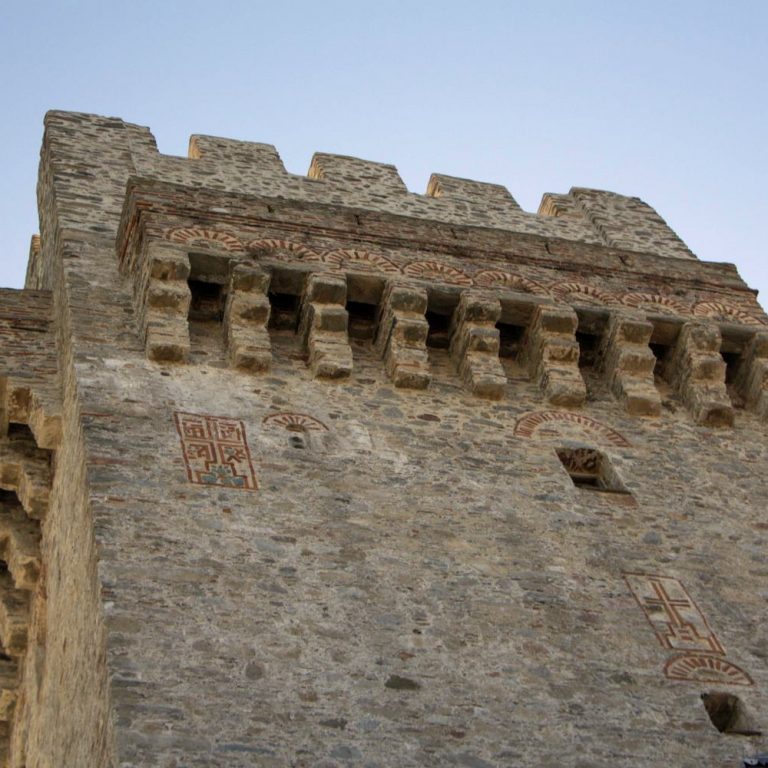The Peak Period
The peak of the Monastery’s development in the 14th century is reflected equally by the significant rise in the number and the quality of its properties both within and outside the peninsula, but also in the frequent and active participation of the monks in Athonite events. The economic and demographic flourishing of the Monastery during this period is related to the presence there at that time of brilliant, inspirational men. The special bond of the Monastery with the Patriarch St Athanasios I, the precursor of the hesychastic movement, a strict ascetic, and a fierce supporter of strict adherence to the monastic canons, appears to have transformed the spiritual climate of the Monastery, and during the following years attracted monks who brought the same spirit with them. The relationship he developed with the Monastery can be traced to the time of his second and brief stay at the monastery in 1278, which coincided with the exile of the Athonites by Michael VIII and Ioannis Bekko due to their refusal to accept the unification of the eastern and western churches after the Council of Lyon. In the Life of Athanasios, his place of residence is not mentioned; however, the preamble of the 1294 chrysobull of Andronikos II Palaiologos refers to the multiple beneficial interventions of the Patriarch towards the Emperor relating to the publication of decrees in favour of the Karakallou Monastery, where he had formerly lived. The testimony of the documents must be accurate, since the Emperor maintained a close, friendly relationship with Athanasios and was personally knowledgeable about his former monastic life.
Moreover, prior to 1310, the monk Iakinthos Kerameas lived at the Monastery. He was a descendant of the aristocratic Kerameos family of Thessaloniki and a relative of St Germanos Maroulis, although the exact degree of relationship is not known. Iakinthos, a monk for about 23 years (1310-1333), greatly influenced the fortunes of the Monastery in his time there.
Likewise, the Life of St Germanos of Thessaloniki, written by the former Athonite Patriarch Filotheos Kokkinos, is particularly revealing about his relationships with the great ascetics of the era, and also for the hesychastic environment of the Monastery. The saint himself, along with members of his family, for example his brother Andronikos Maroulis and the latter’s son Ioannis, are linked with the Monastery: Andronikos was tonsured as a monk, while Ioannis was healed by his saintly uncle when he was gravely ill in the Monastery. The hieromonk Pezos, a fellow ascetic of Germanos, was a brother at the Monastery, while the Patriarch Filotheos maintained a close relationship with Iakinythos.
It is also very likely that Malachias, the former Metropolite of Thessaloniki, died at the Monastery in 1324. Malachias was a student of Patriarch Athanasios and the spiritual father of Germanos; before he became the Metropolite of Thessaloniki, he served as Prior at Great Lavra Monastery. Furthermore, St Gregorios Palamas resided in the Karakallou skete Glossias for two years (1322-1324), along with the ascetic Gregorios Drimu. Their departure is likely connected to the frequent pirate raids at the Monastery.
Finally, among the educated monks who resided at the Monastery during this period and advanced the art of calligraphy is the monk Isaak, the sponsor and scribe of a precious Book of the Gospels, which was presented to the Monastery in 1290.
After the raids of the Latin pirates in 1204, it is likely that the Monastery was reduced to ruins for a second time after raids by Katalanian pirates (1306-1308). Regardless of whether or not the new period of abandonment was a historical event, there are many accounts of pirate raids on Mt Athos by Latin and Turkish pirates during the 14th century. In a written document, the Proto Isaac reports on the terrible condition of the Monastery after the catastrophic raids of the pirates and the Latin army during all of the 13th century, while, as previously mentioned, in 1324 Gregorios Palamas abandoned the skete Glossias where he practiced because of the fear of pirates, and that skete was destroyed just prior to 1353 by Turkish pirates.

